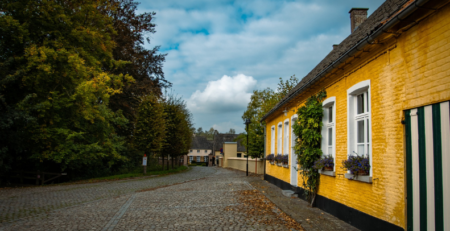Retirement Home Investment – An Opportunity for Impact Investors?
Care home property investments don’t scream lucrative returns, so why are more and more investors taking the plunge?
We are currently seeing a growing number of investors approach the sector with a view of generating medium to long term profit on investments. Knight Frank have said that if the current curve continues, the UK retirement home supply is expected to fall from 456,400 beds to 444,700, while the population over the age of 65 is due to rise by 1 million from 11.4 million, this is set to create an acute shortage of beds by the year 2020.

The lack of care home facilities has created a situation which ultimately will need to be addressed, and this is why we are looking at retirement home investment opportunities with our investors. Knight Frank are suggesting that 6,000 new beds are needed per year, but unfortunately, we are going the other way with care homes closing due to lack of investment.
Many care home providers are struggling to find reasons to invest and refurbish their existing rooms due to investor shyness. As many of these homes are older buildings, with less than adequate facilities for the number of occupants, this in turn results in occupancy levels falling as people seek more up to date and modern care in their later years.
In recent times, the case for elderly care has effectively created what some would view as a two-tier system, with a vast difference in performance between retirement home providers who are providing for privately funded residents versus those who rely on local authority funding.
We regularly see media coverage which is predominantly focussed on the struggles of retirement home operators who are catering for their residents who receive funding from the local authorities. When we review the reduction in funding from the authorities it makes it very difficult for the care home owners to provide the level of expected service.
The privately funded care homes are doing very well, these are mainly in affluent areas of the United Kingdom, areas such as the South East and South West of England.
The downsizing issue
Many elderly people are looking to downsize and live in property that is better suited to their needs, such as a private care home.
However, sellers are finding less activity on the market. With reduced demand for larger buildings, and a lack of suitable care home options, the knock on effect is beyond the individuals involved, but also the economy as a whole.
It is said that 1/3 of property wealth in the United Kingdom is now under the control of households where at least 1 of the occupiers is aged 65 and above. Drilling into the numbers even further, nearly 1 in 10 of those aged 55 to 64 are living in a household with a net property wealth of +£500,000.
The “Grey Pound” now accounts for some 76% of financial wealth in the United Kingdom and it is said they have the willingness to spend. The life expectancy of this age group is increasing year on year at a startling rate. Those that are in retirement are said to have modest incomes along with relatively high assets which ultimately translates into higher feelings of prosperity.
When the moment comes for an individual or a couple to consider the need for a retirement home, it is very clear that they are shying away from the traditional and more institutional home that their parents may have previously occupied, as it does not meet their requirements. Instead they are turning to their assets to fund a higher quality of care rather than that which is offered by the state.
Investing in Residential Care Homes
We are typically looking at developments that are from Victorian period properties in which they have managed to keep their original features along with generous room sizes. Often they will have operated as care homes for many years and with that there is an amazing opportunity for private financing to come in and redevelop some of this dilapidated stock and help to bridge the gap between supply and demand.

An extensive survey is done on each property along with the production of a feasibility report. This will ensure that the property is in a good position as to whether or not it is the right property to generate an income from. The typical size of the retirement home is 15 to 30 rooms and they are in areas that have a high retired population within an affluent area.
The retirement home is then renovated to a very high standard over a period of 4 to 6 months. Following the redevelopment, the retirement home is then reopened offering a luxury home from home to fee paying residents. When buying up existing retirement homes, there is often very little needed in terms of planning applications as it is normally simply a case of the property having a full refit as opposed to actual construction work.
Investing in a retirement home is seen as a smart move because you are investing your capital in an area of the property sector which is considered to be in high demand with diminishing supply.
Nursing Home Investment
When a retirement home is identified as prime for investment, a marketing strategy is developed with a unique focus to said property in order to build awareness and interest from those in the local area. Making use of modern marketing techniques and good PR, it allows for the full potential of the property to be fulfilled by having the right target audience learning about the offering.
Investing in Nursing Homes
Step 1: Due Diligence
The company identifies suitable properties in affluent towns and regions. The company undertakes constant monitoring of the care market and the availability of suitable properties and ensures that full commercial, technical and financial due diligence takes place on all potential properties.
Step 2: Purchase
Following a satisfactory outcome of due diligence, and provided sufficient funds are available, investment monies are used to acquire the property.
Step 3: Development
The properties are renovated into 5-star luxury care accommodation using permitted development rights where possible or the equivalent full planning requirements. The potential for extension works to existing properties and/or the construction of new build facilities to increase the number of care studios is always explored.
Step 4: Operation, sales and lettings
Upon completion of works the property is registered (or re-registered, as appropriate) with the Care Quality Commission (CQC) for the provision of residential, nursing and domiciliary care services. Comprehensive regional marketing and sales campaigns are then launched to secure sales and lettings on individual care studios and achieve/maintain target occupancy levels.
You have the opportunity to purchase a care studio within a care home on a 125 year leasehold basis. The care studio will then be managed for you and in return you will receive a fixed income. More information about our retirement home investment opportunity is available upon request.
ARE YOU READY TO START INVESTING?
Subscribe to our mailing list now for exclusive deals, investment guides and
the latest information from the property market.
ARE YOU READY TO START INVESTING?
Subscribe to our mailing list now for exclusive deals, investment guides and the latest information from the property market.






